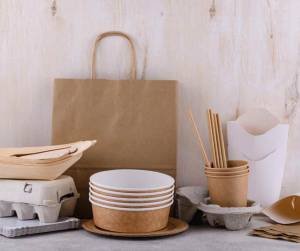Embracing Sustainability: A Shift Towards Eco-Friendly Food and Beverage Packaging
In an age where environmental concerns are at the forefront of global consciousness, businesses are increasingly recognising the importance of sustainability in their operational strategies. One of the most impactful ways to make a difference is through sustainable packaging, particularly in the food and beverage sector, where packaging plays a crucial role in resource management and waste reduction. In this blog post, we will explore the essential characteristics of sustainable packaging, highlight innovative examples, and discuss how businesses can adopt eco-friendly practices.
Understanding Sustainable Packaging

Sustainable packaging is designed with the environment in mind, utilising materials and methods that minimise impact. The characteristics of sustainable packaging encompass several key factors:
1. Use of Renewable and Recyclable Materials
At the heart of sustainable packaging lies the commitment to renewable resources. Materials such as bioplastics, made from plant-based materials like cornstarch, sugarcane, and algae, offer a viable alternative to traditional plastics. These bioplastics can be composted or biodegradable, thus facilitating the reduction of waste in landfills. Moreover, packaging should be easily recyclable, ensuring efficient processing and reuse.
2. Reduction of Packaging Waste
Minimising waste is paramount in the packaging lifecycle. An effective approach is to optimise packaging dimensions to reduce raw materials used, thereby eliminating unnecessary layers or components. Lightweight designs contribute significantly to reducing packaging waste, which not only lessens environmental impact but also cuts down on transportation emissions.
3. Incorporation of Innovative Designs
Sustainable packaging is also characterised by innovative designs that advance eco-friendliness. Concepts such as edible packaging—crafted from materials like seaweed or starch—eliminate waste entirely, while minimalist packaging reduces material usage whilst still protecting the product. These creative solutions illustrate the endless possibilities in sustainable design.
Exemplary Cases of Sustainable Food Packaging
Numerous businesses are paving the way in sustainable packaging practices. Here are some standout examples:

Bioplastics
Leading the charge, several food brands have begun switching to bioplastics derived from renewable sources. These materials provide the same functionality as traditional plastics but with the added benefit of compostability, allowing businesses to reduce their ecological footprint significantly.
Compostable Materials
Using compostable materials such as bagasse (sugarcane fibre), bamboo, and molded pulp provides environmental alternatives to conventional packaging. These materials decompose naturally and can be composted alongside organic waste, contributing to a more sustainable waste management system.
Edible Packaging
Edible packaging is a fascinating innovation gaining traction in the industry. Products made from seaweed or starch not only provide a functional barrier for food items but also allow consumers to consume the packaging, thereby eliminating waste.
Minimalist Packaging
Minimalist packaging designs focus on efficiency without compromising aesthetics. This trend showcases how businesses can reduce excess materials while enhancing the visual appeal of the product.
Sustainable Beverage Packaging Innovations
The beverage industry faces unique challenges regarding sustainability. Here are ways companies are responding:
Emphasis on Recyclability
Many companies are prioritising widely recyclable materials such as glass, aluminium, and certain types of plastics, like PET. By adopting these materials, businesses can foster a more robust recycling infrastructure.
Given the significant implications of single-use plastics, efforts are underway to transition towards refillable containers and alternative materials, thereby minimising reliance on disposable packaging.
Efficient Resource Use
Sustainable beverage packaging strategies often involve optimising resource consumption throughout production. This means reevaluating processes to reduce energy use and waste, from raw material extraction all the way to disposal.
Moving Towards a Sustainable Future
As consumer demand for eco-friendly products surges, businesses must take proactive steps to implement sustainable packaging solutions. Investing in life cycle assessments, adhering to eco-design principles, and collaborating with reliable sustainable packaging manufacturers are crucial strategies for companies seeking to align with sustainability goals.
In conclusion, the shift towards sustainable food and beverage packaging is not just a trend; it’s a necessary transformation. By embracing eco-friendly practices, businesses can contribute to a healthier planet while meeting the changing expectations of their customers. The combination of innovative materials and designs ensures that sustainability and functionality can go hand in hand, shaping a greener future for all.
As we move forward, it is essential for companies across all sectors to consider how their packaging choices impact the environment. By taking these steps, we can collectively make strides towards a more sustainable world, one package at a time.
At Torboba Food Packaging, we believe in the power of recycling and are committed o integrating these principles into our food packaging production. By embracing recycled products, we and our partners contribute to a more sustainable future.
Discover Tortoba’s eco-friendly packaging solutions and help shape a greener tomorrow with sustainable products.



